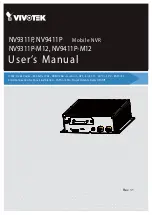
Disposal
113
Disposal
Information on the EU directive on waste
electrical and electronic equipment
To protect the environment, do not dispose of the device
with domestic waste at the end of its service life. It can be
disposed of at one of the appropriate collection points in
your country. Please obey your local regulations when
disposing of material.
Dispose of the device in accordance with EU di-
rective 2002/96/EC
– WEEE (Waste Electrical
and Electronic Equipment). If you have any
questions, please contact the department of
your local authority which is responsible for
waste disposal. Used equipment can be dis-
posed of, for example, by your local or munici-
pal authority, the local waste disposal company
or your dealer.
Information on handling batteries
Always insert batteries with the correct polarity. Never
attempt to recharge the batteries supplied and do not
throw them into naked flames under any circum-
stances. Do not use different batteries at the same
time (old and new, alkaline and zinc-carbon etc.).
Remove the batteries if the device is not used for a
long period of time. If used improperly, there is a risk
of explosion and leaking batteries!
Take environmental protection into account
– used
batteries should not be disposed of in domestic
waste! They must be taken to a collection point for
used batteries.
Make sure that batteries are kept away from small
children. Children may put batteries in their mouths
and swallow them. This can cause serious harm to
their health. If this happens, consult a doctor immedi-
ately.
Do not charge normal batteries, heat them up or
throw them into naked flames (they may explode).
Change low batteries in good time.
Always change all the batteries at the same time and
use batteries of the same type.
Important
Leaky or damaged batteries can cause chemical
burns on contact with the skin.
In this case, wear protective gloves.
Clean the battery compartment with a dry cloth.
Important information on disposing of
batteries
Your product uses batteries which are subject to the Eu-
ropean directive 2006/66/EC and may not be disposed of
with domestic waste.
Find out about the regulations for the separate collection
of batteries which apply in your country.
Proper disposal of batteries helps prevent harm to health
and the environment.
Batteries that contain harmful chemicals are labelled with
these signs:
Pb = battery contains lead
Cd = battery contains cadmium
Hg = battery contains mercury
Information on the European RoHS
directive
The device complies with the RoHS directive.
Compliance with the RoHS directive means that the
product or component does not contain more than the fol-
lowing maximum concentrations of the following sub-
stances in homogeneous materials, unless the substance
is part of an application that is excluded from the RoHS
directive:
a)0.1% lead (by weight)
b)Mercury
c)Hexavalent chromium
d)Polybrominated biphenyl (PBB) and polybrominated
diphenyl ether
e)0.01% cadmium (by weight)
Содержание TVVR41200
Страница 59: ...ABUS 4 8 16 channel 650 TVL real time digital recorder TVVR41200 TVVR41210 TVVR41220 User guide Version 1 0 ...
Страница 118: ...ABUS 4 8 16 kanaals 650 TVL realtime digitale recorder TVVR41200 TVVR41210 TVVR41220 Gebruikershandleiding Version 1 0 ...
Страница 120: ...Overzicht 120 Overzicht Achterkant Opmerking De afbeeldingen voor TVVR41200 en TVVR41210 zijn vergelijkbaar Voorzijde ...
Страница 235: ...235 ABUS 4 8 16 kanal 650 TVL Realtime digitaloptager TVVR41200 TVVR41210 TVVR41220 Betjeningsvejledning Version 1 0 ...
Страница 293: ...ABUS 4 8 16 kanałowa nagrywarka cyfrowa 650 TVL Realtime TVVR41200 TVVR41210 TVVR41220 Instrukcja obsługi Wersja 1 0 ...
Страница 295: ...Przegląd urządzenia 295 Przegląd urządzenia Widok z tyłu Wskazówka Rysunki dla TVVR41200 i TVVR41210 są podobne Przód ...















































